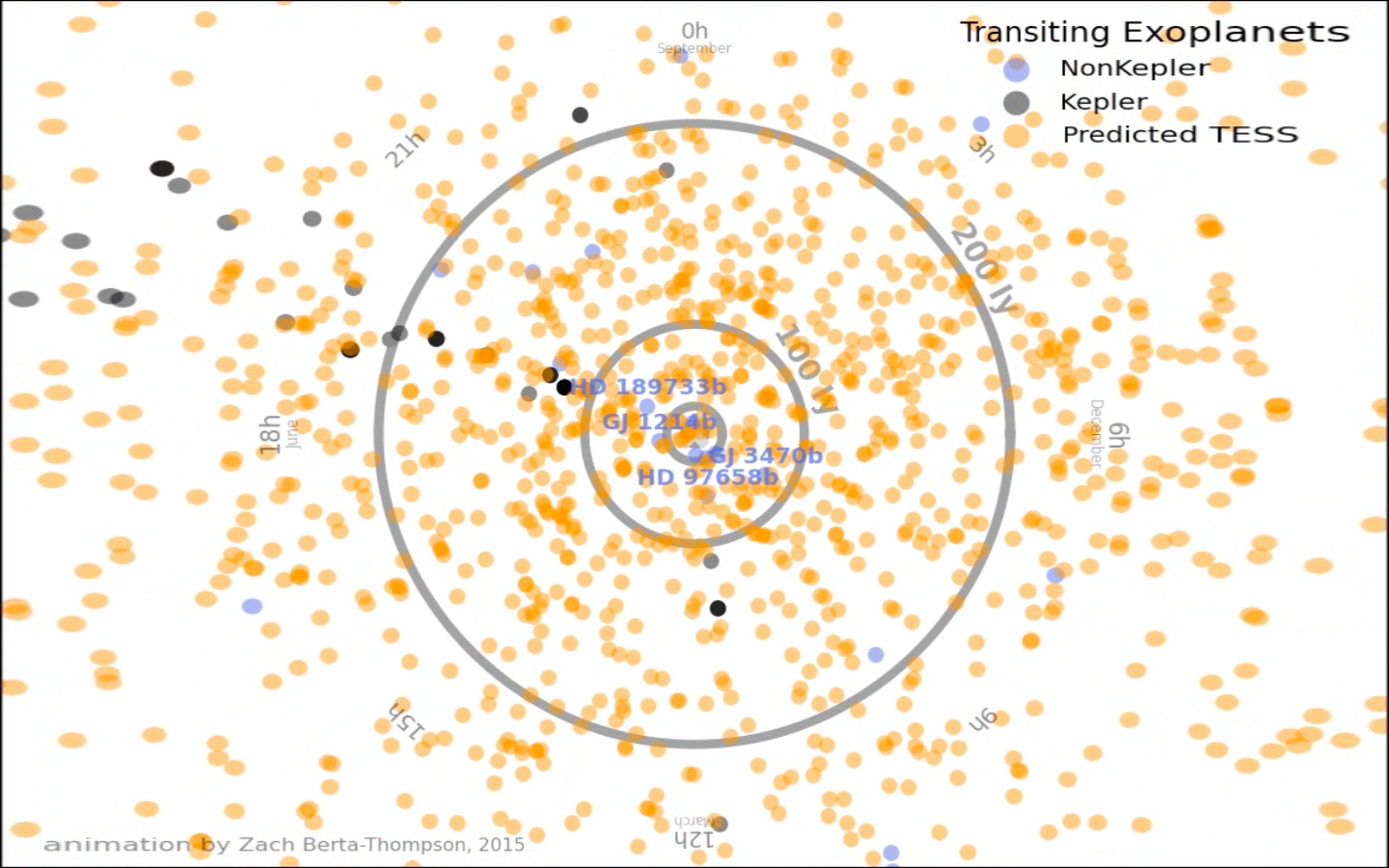exoplanet transit
All posts tagged exoplanet transit
Evidence of Long-term Period Variations in the Exoplanet Transit Database (ETD)
https://iopscience.iop.org/article/10.3847/1538-3881/ac959a

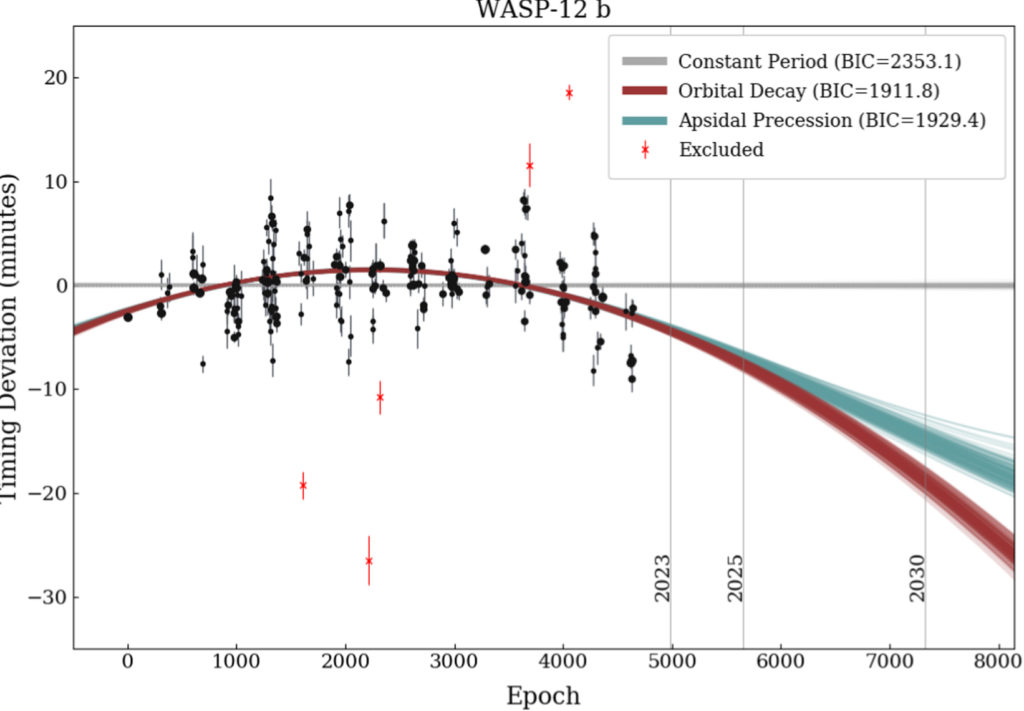
able 4. Model Comparison for Secondary Analysis—Data Variance for ETD Transit Times
| Target | Decay Rate | 1σ Unc. | BIClinear | BICdecay | ΔBIC |
|---|---|---|---|---|---|
| (ms yr−1) | (ms yr−1) | ||||
| WASP-12 b | −34.8 | 4.9 | 223.7 | 202.7 | −21.0 |
| HAT-P-19 b | −64 | 17 | 80.6 | 78.2 | −2.4 |
| TrES-1 b | −16.0 | 3.7 | 73.3 | 68.3 | −5.0 |
| WASP-4 b | −6.7 | 2.4 | 62.6 | 62.7 | 0.1 |
| TrES-2 b | −22.0 | 8.0 | 159.0 | 160.3 | 1.3 |
| TrES-5 b | −25 | 11 | 118.3 | 120.5 | 2.2 |
| HAT-P-32 b | −32 | 12 | 95.5 | 96.7 | 1.2 |
| WASP-10 b | −10.1 | 7.6 | 131.6 | 135.5 | 3.9 |
| WASP-43 b | 3.5 | 4.0 | 126.5 | 130.9 | 4.4 |
| TrES-3 b | 0.01 | 1.9 | 227.8 | 233.1 | 5.3 |
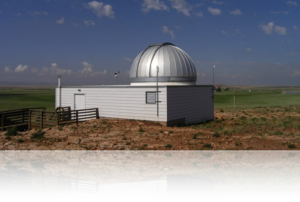
Wyoming’s Red Buttes Observatory
As part of rich tapestry of American astronomy, lots of universities across the US have small but highly serviceable observatories, with histories going back many decades. For instance, Boise State’s own on-campus observatory was installed in the late 70s, and although it’s hardy and still functional, like a lot of these observatories, it lacks capabilities that would allow its use as an active research facility. Such small, older facilities have primarily been used for outreach and teaching, rather than up-to-date research.
In the last few years, tremendous improvements in hardware and software have dramatically reduced the costs and expanded the availability of research-grade instrumentation and computational capabilities. Many of these observatories are now roaring to life and contributing to research efforts at the razor-edge of astronomy – characterizing new exoplanets, contributing to rapid-response gamma-ray burst surveys, among other projects.
However, the process of upgrading these observatories is challenging, as we’ve discovered in trying to refurbish Boise State’s observatory, and there is not a lot of guidance out there about best practices.
Recently, David Kasper of University of Wyoming Physics and Astronomy led an effort to automate Wyoming’s Red Buttes Observatory (RBO), located about 15 miles south of Laramie. Thankfully, he documented their work in a paper published late last year.
The paper provides lots of very specific technical details and even the source code the group used to make RBO a facility capable of supporting undergraduate and graduate research. For instance, RBO’s new weather station determines meteorological conditions at the observatory and posts them, every 60-s, to a public website. Automated monitoring of these conditions allows the observatory itself to decide whether the weather is conducive to observing and even to close up the dome in the case of inclement weather.
The new observatory has collected transit observations of hot Jupiters, a project right up my alley. And so, their work will provide an important roadmap for Boise State’s efforts to renew our observatory. We hope, soon, to see the shadows of distant worlds right from downtown Boise.
—
If you’d like to donate to help with refurbishing our observatory, please visit this website.
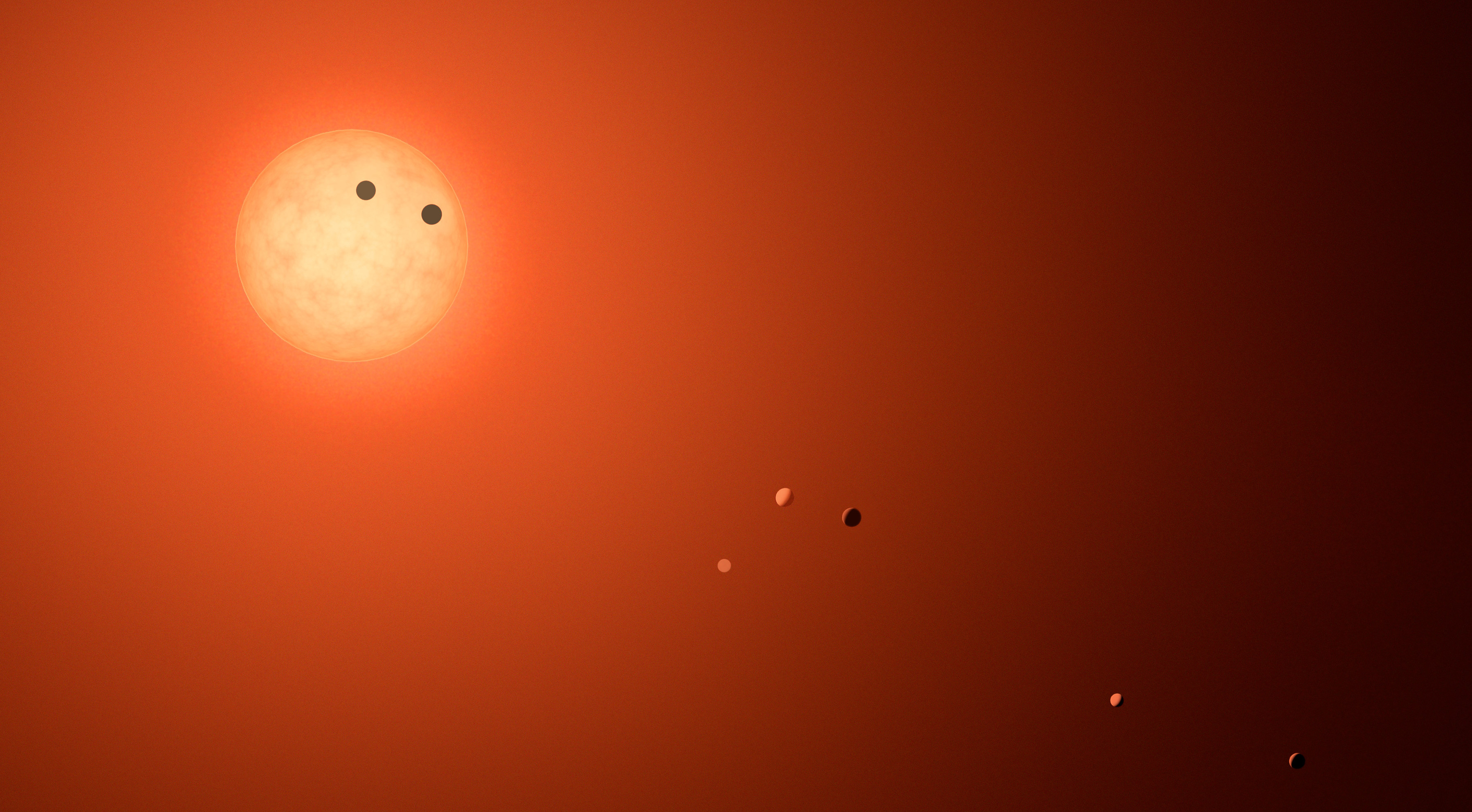 Unless you were living under a very large and heavy rock last week, you probably heard about the discovery of seven planets in the TRAPPIST-1 system by Michaël Gillon and colleagues.
Unless you were living under a very large and heavy rock last week, you probably heard about the discovery of seven planets in the TRAPPIST-1 system by Michaël Gillon and colleagues.
Although this system was already known to host three, roughly Earth-sized transiting planets, the discovery of four more throws the door wide open for habitability – all seven planets receive the right amount of starlight from their diminutive red-dwarf host that liquid water might be stable on their surfaces.
There are so many interesting questions to explore for this system – What are the planets’ atmospheres like? How did this system of tightly-packed planets form and how do their orbits remain stable? And, of course, are they habitable?
Fortunately, concerted follow-up observations and theoretical studies can probably a lot of these questions. The fact that the planets all transit their small host star means their atmospheres are ideal for study by the James Webb Space Telescope. Strong gravitational tugs among the planets caused their orbits to change visibly over the course of the observations, so we have strong constraints on how exactly the planets interact.
The last and probably most important question is going to be a lot more difficult to answer. But since a detailed understanding of this system is likely (and probably inevitable, given the enormous enthusiasm for this system), we’ll soon be very close to answering the question of whether the TRAPPIST-1 system is habitable and maybe even inhabited.
One bit of trivia: the TRAPPIST survey that discovered this system was named in honor of the contemplative Roman Catholic religious order of Trappists, and the astronomers reportedly celebrated their discovery with a round of Trappist beer. Maybe this should be the start of a new tradition of naming new planetary systems after beers.
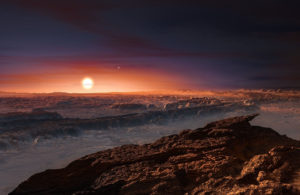 A very active and engaging morning session on detecting exoplanets via the transit method on AAS 229 Day 1. Lots of good talks (although all of the talks were by male astronomers) and probing but polite questions (again, mostly by male astronomers – interesting study on these trends here). A few talks stuck out in my mind.
A very active and engaging morning session on detecting exoplanets via the transit method on AAS 229 Day 1. Lots of good talks (although all of the talks were by male astronomers) and probing but polite questions (again, mostly by male astronomers – interesting study on these trends here). A few talks stuck out in my mind.
Aaron Rizzuto from UT Austin looked for transiting planets in stellar clusters spanning a range of ages using data from the K2 Mission and found there seem to be fewer hot Jupiters in clusters 10 million years old than there are in older (hundreds of millions of years old) clusters. He suggested that this may mean it takes 100s of millions of years for the migration that makes hot Jupiters to take place. That would probably rule out one standard model for making hot Jupiters, namely gas disk migration, since that probably takes place within a few 10s of millions of years.
Dave Kipping of Columbia University discussed his search for transits of Proxima b, the recently discovered, Earth-sized planet just four light years from Earth. Unfortunately, the host star, Proxima, is a highly variable star due to almost constant flaring. As a result, it would be very difficult to see the planet’s transit – as Kipping said, it requires wading through “a sea of variability”. However, Kipping and his group struggled valiantly to recover the transit using data from the Canadian MOST satellite, and it looks like the planet just does not transit. So we probably won’t know the planet’s radius (at least not for a long time). Bummer.
The last talk of the session was from George Ricker, the PI of the TESS mission, the follow-up mission to Kepler, about TESS’s status and prospects. Apparently, the mission will observe more than 2 million stars! Orbiting many of those stars will be nearby habitable planets, and Ricker showed an amazing simulation of where those stars might be found (courtesy of Zach Berta-Thompson of UC Boulder), a still from which is shown below.
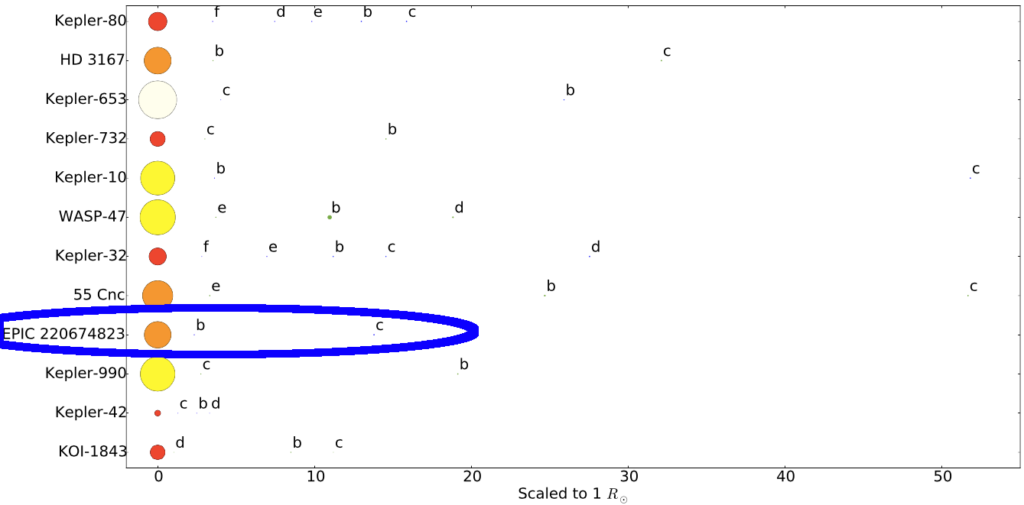
Twelve multi-planet systems where the innermost member is very close to the host star, that is, has an orbital period less than 1 day. From Adams et al. (2016).
Big research news today: our research group SuPerPiG, led by the inimitable Dr. Elisabeth Adams, announced the discovery of two new planets, EPIC 220674823 b and c.
Using data from the K2 Mission, we found these planets by looking for the shadows of the planets as they passed in front of their host stars, a planet-hunting technique known as the transit method.
These new planets are very different from planets in our solar system in several surprising ways.
First, they’re both bigger than Earth but smaller than Neptune – planet b is 50% larger, and planet c is 2.5 times larger. They inhabit a strange nether-region of planets where they’re known as super-Earths or sub-Neptunes, planets somewhere between Earth and Neptune. The reason there’s no specific name for such planets is because astronomers don’t understand this new class of planet at all.

An artist’s conception of CoRoT-7 b, another ultra-short-period planet.
Second, both planets are MUCH closer to their Sun than the planets in our solar system. In fact, planet b is so close to its sun that it takes less time to orbit (14 hours) than all the playtime it took the Cubs to go from 3 games down to tying up the World Series. By comparison, planet c circles at the glacial pace of once every 13 days.
Another thing that’s interesting about our planets: they’re yet another system of with an ultra-short-period planet (USP) in which there is more than one planet, i.e. a multi-planet system. In fact, as we argue in our paper, most of the known systems with ultra-short-period planets are probably multi-planet systems and that fact might help explain the origin of these chthonic planets.
 I gave a talk at Boise State’s Osher Lifelong Learning Institute on exoplanets generally and my group’s research specifically.
I gave a talk at Boise State’s Osher Lifelong Learning Institute on exoplanets generally and my group’s research specifically.
The crowd was really amazing. Despite my being delayed by a flat bike tire, there was an enormous group of enthusiastic astrophiles waiting for me when I arrived.
We toured the night sky briefly using the stellarium program, a free (but please donate) and open-source night sky simulator available here — http://stellarium.org/.
I made quite a long talk to fill the two-hour scheduled slot, but there were so many interesting questions, I barely made it halfway through. I’ve posted my abstract and presentation below in case there’s any interest.
—
The Exoplanet Revolution
The discoveries of hundreds of planets outside our solar system, called exoplanets, have led to a renaissance in astrophysics and revolutionized every sub-discipline within planetary astronomy. The vast array of new planets strains imagination, and even after two decades of discovery, exoplanets pose a host of astrophysical riddles. In this presentation, I’ll describe how these distant worlds have revised our picture of planet formation and evolution. I’ll also discuss outstanding questions in planetary astrophysics and prospects for observational work, including the TESS mission, selected by NASA for a 2017 launch to find more, nearby planets.

Artist’s conception of cloudy GJ 1214 b. From http://www.nytimes.com/2014/01/07/science/space/the-forecast-on-gj-1214b-extremely-cloudy.html.
At journal club this week, we discussed the recent discovery using data from the K2 mission of the sub-Neptune planet K2-28.
This planet, roughly twice the size of Earth, circles a very small M-dwarf star so closely that it only takes two days to complete one orbit. Even though the planet is very close to its star, the star is so cool (3000 K) and so small (30% the size of our Sun) that the planet’s temperature is only 600 K. (A planet in a similar orbit around our Sun would be 1200 K.)
The authors of the discovery paper point out that this planet is similar in many ways to another famous planet, GJ 1214 b. Like GJ 1214 b, K2-28 b is member of this puzzling but ubiquitous class of sub-Neptune planets — planets that fall somewhere between the Earth and Neptune in size and composition and do not exist in our solar system*. Both planets also orbit relatively nearby M-dwarfs, which means, like GJ 1214 b, K2-28 b might be amenable to follow-up observations.
Previous follow-up observations of GJ 1214 b indicated that planet’s atmosphere is very cloudy or hazy. So K2-28 b could provide another very important toehold along the road toward understanding this strange class of hybrid planet.
*unless Planet Nine turns out to be real
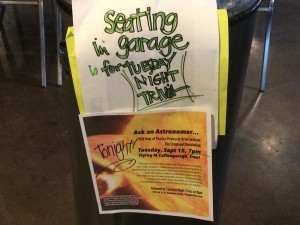 Had a great time last night at Flying M Coffee in Nampa. I gave a short talk about my research and recent developments in exoplanet astronomy.
Had a great time last night at Flying M Coffee in Nampa. I gave a short talk about my research and recent developments in exoplanet astronomy.
Then I opened the floor up for questions — the best part of the night. Lots of really great questions about alien life, what exoplanets are like, when will we find life.
One question that stood out for me was asked by a young woman about how we study the composition of exoplanet atmospheres. I talked about the promise of the James Webb Space Telescope to measure transits in different colors. And there was a moment of genuine awe and surprise I could see on her face. It was really great.
As of this writing, our campaign has broken $1600 — very exciting. Thanks to Cindy Hall and April and Seth Masarik for their support.
